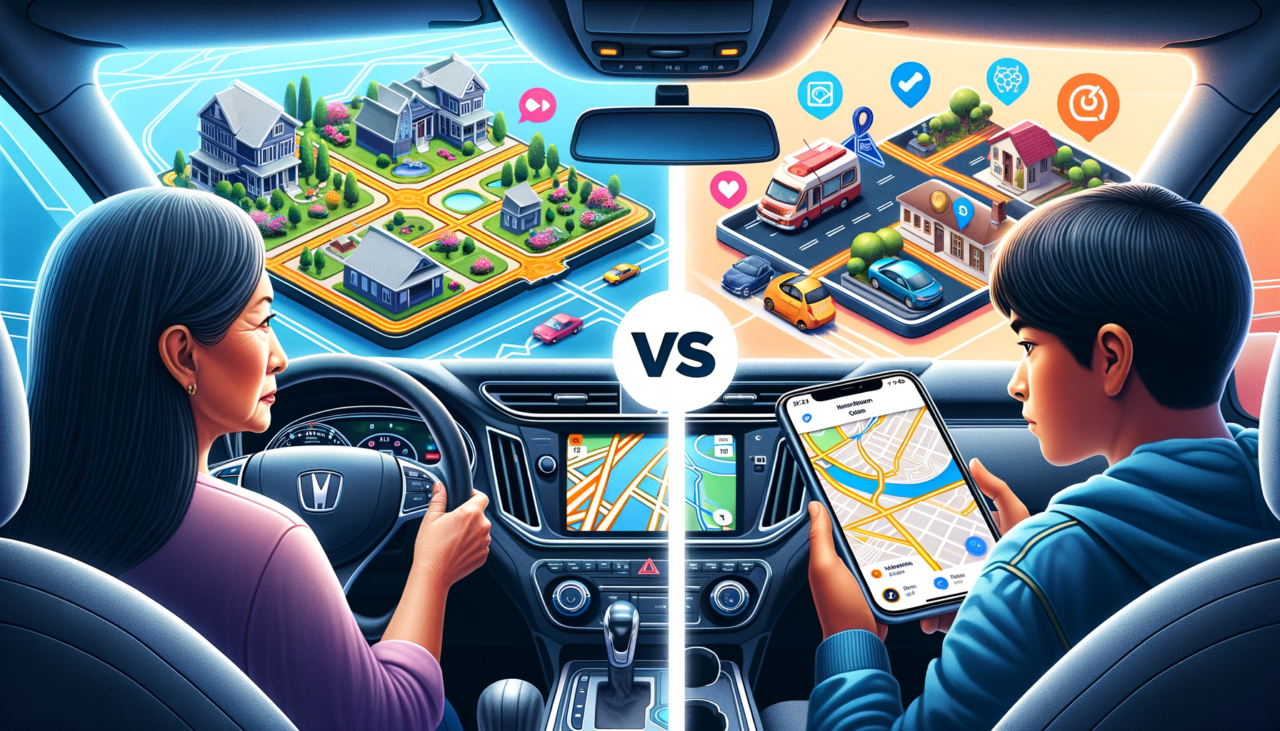Navigating the Road: Built-In Navigation vs. Online Maps
In a world increasingly defined by technology, the question of how to best navigate our paths — both literal and metaphorical — is ever pertinent. As I traverse the bustling streets of Cairo or the serene landscapes of the Nile, I am often reminded of the choices we make in charting our courses. Today, we delve into the realm of navigation, comparing the sturdy reliability of Built-In Navigation systems to the dynamic versatility of Online Maps. Join me on this journey as we explore their characteristics and discover which might best serve your travels.
The Tale of Two Navigations
Imagine setting out on a journey through the vibrant souks of Marrakesh or the historic alleys of Alexandria. Each choice of navigation brings with it a unique set of strengths and limitations, much like the ancient caravans and their reliance on the stars versus the modern adventurer equipped with a smartphone. Let us examine these two pathways:
| Feature | Built-In Navigation | Online Maps |
|---|---|---|
| Accessibility | Pre-installed in vehicles, always available | Requires internet, but accessible on many devices |
| Update Frequency | Updates less frequently, often via paid services | Frequently updated, often free |
| Cost | Higher initial cost, no data charges | Free or low-cost apps, potential data charges |
| Integration | Integrated with vehicle systems | Limited integration, but highly customizable |
| Offline Availability | Always available without internet | Requires downloading maps for offline use |
| Precision and Detail | High precision, sometimes limited detail | High detail, crowdsourced data for accuracy |
| User Interface | Consistent and car-friendly | Varies widely, often user-friendly |
Built-In Navigation: The Reliable Compass
Built-In Navigation systems are akin to the ancient mariner’s compass — steadfast, reliable, and always ready. Installed directly into the vehicle, these systems offer a seamless integration with the car’s dashboard, steering you through your journey without the need for an internet connection. Their reliability is akin to the unchanging constellations, guiding travelers through the night. However, like the stars, their updates are less frequent, requiring occasional investment for the latest maps.
- Pros: Always accessible, no data charges, integrated with vehicle systems
- Cons: Higher initial cost, less frequent updates, limited customization
Online Maps: The Ever-Evolving Guide
Conversely, Online Maps are like the dynamic rivers of the Arab world, ever-changing and brimming with new information. With frequent updates and the wisdom of crowdsourced data, these maps offer a level of detail that can be as intricate as the patterns of a Persian rug. Accessible on devices ranging from smartphones to tablets, they provide a versatile navigation experience. Yet, like the rivers, they require a connection — an internet lifeline — to flow at their best.
- Pros: Frequently updated, highly detailed, customizable, low-cost
- Cons: Requires internet for updates, potential data charges, less vehicle integration
Choosing Your Path
As you consider which navigation system to adopt, reflect on your own journey. Are you drawn to the steadfast reliability of Built-In Navigation, much like the ancient pharaohs who relied on the Nile’s predictable flood cycles? Or do you prefer the adaptability and depth of Online Maps, akin to the thriving bazaars that evolve with each new day?
Ultimately, the choice is yours. Each path offers its own unique perspective on the world, much like the stories and histories that weave through the streets of Cairo and beyond. As you travel, let your choice of navigation be your guide, illuminating paths both familiar and new.

Comments (0)
There are no comments here yet, you can be the first!